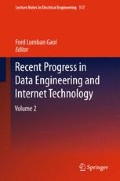Abstract
Building software which can deliver high performance consistently, across a range of different computer clusters, is a challenging exercise for developers as clusters come with specialized architectures and differing queuing policies and costs. Given that optimal code configuration for a particular model on any machine is difficult for developers and end-users alike to predict, we have developed a test which can provide instructions for optimal code configuration, is instantly comprehensible and does not bombard the user with technical details. This test is in the form of a ‘personality type’ resonant with users’ everyday experience of colleagues in the workplace. A given cluster is deemed suitable for either development and or production and small/composite models and or large/complex ones. To help users of our software to choose an efficient configuration of the code, we convert the personality assessment result into a series of optimization instructions based on their cluster’s personality type.
Access this chapter
Tax calculation will be finalised at checkout
Purchases are for personal use only
Preview
Unable to display preview. Download preview PDF.
References
Balay, S., Buschelman, K., Eiukhout, V., Gropp, W., Kaushik, D., Knepley, M., McInnes, L.C., Smith, B., Zhang, H.: PETSc Users Manual (2007), http://www.mcs.anl.gov/petsc/petsc-as/snapshots/petsc-2.3.3/docs/manual.pdf
Briggs, K.C., Myers, I.B.: Myers-Briggs Type Indicator. Consulting Psychologists Press, Palo Alto (1943)
Credo Documentation, http://auscope.monash.edu.au/credo-doc/
Hackbusch, W.: Multi-grid methods and applications. Springer Series in Computational Mathematics, vol. 4, 391 pages. Springer, Berlin (1985)
HPCwire: Washington State University Uses SiCortex Systems to Study Earthquakes (2009), http://www.hpcwire.com/offthewire/Washington-State-University-Uses-SiCortex-Systems-to-Study-Earthquakes-43773062.html
Humble, K.: Underworld Documentation (2010), https://csd.vpac.org/doxygen-v1.4.1/dd/dbe/Analytic__solCx_8c.html
Moresi, L., Cooper, C., Mansour, J.: Size and Scaling of small-scale instabilities beneath continental lithosphere. AGU Poster 90(52) (2009)
Moresi, L., Dufour, F., Muhlhaus, H.-B.: A Lagrangian integration point finite element method for large deformation modeling of viscoelastic geomaterials. Journal of Computational Physics 184, 476–497 (2003)
Moresi, L.M., Quenette, S., Lemiale, V., Meriaux, C., Appelbe, B., Muhlhaus, H.-.B.: Computational approaches to studying non-linear dynamics of the crust and mantle. Earth and Planetary Science Letters 305, 149–168 (2007)
Spencer, J.: Auscope Simulation and Modelling Newsletter, http://www.auscope.org.au/userfiles/file/Communications/AuScopeNewsletter_Feb20081.pdf
Texas Advanced Computing Center: HPC, http://www.tacc.utexas.edu/resources/hpc/
Underworld Installation Guide, http://www.underworldproject.org/documentation/InstallGuide.html
Author information
Authors and Affiliations
Corresponding author
Editor information
Editors and Affiliations
Rights and permissions
Copyright information
© 2012 Springer-Verlag Berlin Heidelberg
About this paper
Cite this paper
Sharples, W., Moresi, L., Cooper, K., Sunter, P. (2012). Comp. Psy. 101: The Psychology behind High Performance Computing. In: Gaol, F. (eds) Recent Progress in Data Engineering and Internet Technology. Lecture Notes in Electrical Engineering, vol 157. Springer, Berlin, Heidelberg. https://doi.org/10.1007/978-3-642-28798-5_59
Download citation
DOI: https://doi.org/10.1007/978-3-642-28798-5_59
Publisher Name: Springer, Berlin, Heidelberg
Print ISBN: 978-3-642-28797-8
Online ISBN: 978-3-642-28798-5
eBook Packages: EngineeringEngineering (R0)

